Hummingbird feeders delight many bird enthusiasts, attracting these feathered jewels into our gardens. However, one common issue hummingbird lovers face is the invasion of bees. While bees are beneficial pollinators, they can quickly take over the feeder, scaring away the hummingbirds and draining the nectar. Below are some proven tips and solutions on how to keep bees away from hummingbird feeders without compromising the bird-watching experience.
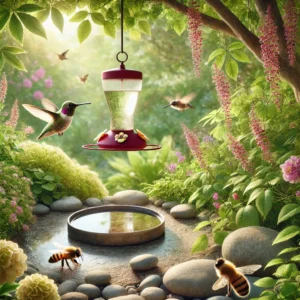
Why Bees Like Hummingbird Feeders
Bees are naturally attracted to sugar, and hummingbird nectar is essentially sugar water. Once bees discover this sweet source, they communicate it to their hive, leading to a swarm of buzzing visitors.
Why Bees on Your Humminbird Feeder Are a Problem?
While bees are essential for pollination, their presence at your hummingbird feeder can create several problems. They quickly overwhelm the feeder, draining it of nectar and leaving little for the hummingbirds. Bees tend to gather in large numbers, which can intimidate the birds and prevent them from feeding. Additionally, bees may contaminate the nectar with dirt or pollen, which could spoil the nectar faster and harm the hummingbirds. Furthermore, if anyone in your household is allergic to bee stings, having bees on the feeder can pose a health risk.
Great Tips How to Keep Bees Off Hummingbird Feeders
Based on expert advice and insights from within the birding community, we have compiled a comparative listing of effective remedies to deal with this challenge. From complete methods to a rating for each method on how to keep bees away from hummingbird feeders, this guide offers actionable tips to help you maintain a no-bee zone around your feeders for your feathered friends in need. In the following, let’s review some of the best methods, rated for effectiveness and verified through community experiences.
1. Use a Saucer-Style Feeder
Effectiveness: 🐦🐦🐦🐦🐦
Switching to a saucer-style feeder is one of the most highly recommended solutions to keep bees off hummingbird feeders. These feeders are designed in a way that bees, with their short tongues, cannot access the nectar, making it much harder for them to feed.
As one participant in the birding community said, “Your problems will be gone if you switch to the saucer type of feeder. Bees can’t get in.” Saucer-style feeders, such as the HummZinger, are praised for their effectiveness in keeping both bees and ants away. Bird enthusiasts report years of success with this type of feeder.
2. Relocate the Feeder
Effectiveness: 🐦🐦🐦🐦🐦
Bees rely on scent trails to locate food. By relocating your feeder, even by just a few feet, you can confuse them and disrupt their trail. This is a quick and effective method to manage the problem.
One birding community participant noted, “Replace it somewhere else overnight, and bees will have a harder time finding it. Bees also can’t see red, so cover any other colors with red to deter them.”
Read the complete guide Where to Place Hummingbird Feeder: Best Practices.
3. Shade the Feeder
Effectiveness: 🐦🐦🐦🐦
Bees prefer sunny areas, so moving your feeder to a shadier spot can reduce bee activity without affecting hummingbirds. Shading the feeder also helps preserve the nectar, preventing it from spoiling too quickly.
As one community member shared, “I hang mine under the roof eaves where it’s shaded. This reduces bee visits and keeps the nectar fresher for the hummingbirds.”
4. Use Less Sweet Nectar
Effectiveness: 🐦🐦🐦🐦
Diluting the sugar concentration of your nectar to a 5:1 ratio (5 parts water to 1 part sugar) makes it less appealing to bees, while still being attractive to hummingbirds. Bees are more sensitive to sugar content, so this can help.
A bird enthusiast shared, “Using more water makes the nectar less attractive to bees while still keeping the hummingbirds happy.”
Find out about How Often to Change Hummingbird Feeder.
5. Remove Yellow Parts
Effectiveness: 🐦🐦🐦🐦
Bees are particularly drawn to yellow, so if your feeder has yellow parts, replace them with red or cover them to reduce the appeal to bees.
One bird lover explained, “The advice I received was to eliminate yellow on the feeders. After switching to red flowers, I had no more problems with bees.”
6. Provide Another Water Source for Bees
Effectiveness: 🐦🐦🐦
Bees are often looking for water, especially in hot weather. Offering a shallow dish filled with water and pebbles can divert their attention away from the hummingbird feeder. This eco-friendly solution works well alongside the other methods listed.
While not a complete fix on its own, providing a separate water source can help with the problem of how to rid bees from hummingbird feeders.
7. Timing of Refills in the Late Afternoon
Effectiveness: 🐦🐦🐦
Refilling your feeder in the late afternoon, when bees are less active, allows hummingbirds to feed undisturbed. This can be an effective way to manage bee activity in areas with heavy bee presence.
One bird enthusiast shared, “I refill the feeders in the late afternoon when the bees leave, and the hummingbirds drink in peace.”
Tip: Prevent Contaminating the Feeder with Sugar
Bees are very sensitive to sugar, even in small amounts. If there is even a single drop of nectar or sugar around the OUTSIDE of the feeder, the bees can trace it out in no time. To avoid unintentional contamination and attract bees to your hummingbird feeder, do the following:
1. Disassemble and Clean Thoroughly: Disassemble and completely rinse the top and bottom of a feeder with running water—no soap or special cleaners are needed. Be sure to clean every part so that no sticky substance remains.
2.Wash Your Hands: After cleaning, wash your hands under running water to ensure no sugar traces are left on your hands, that may have transferred.
3.Prepare Nectar Separately: Mix the fresh nectar away from the feeder parts. This precaution prevents sugar from accidentally spilling over into the feeder parts.
4.Use the Hook, Not Your Hands: Refill the feeder only by holding on to the hook, not touching the base of the feeder with your hands. Carefully pour in the nectar without spilling outside the feeder.
5.Final Rinse and Assembly: After filling the feeder, re-wash your hands. With clean hands, snap the top cover onto the base.
6. Placing the Feeder: Pick up the feeder using the hook only, without touching the feeder’s body, and replace it in your assigned location.
This way, you will minimize traces of sugar that attract bees, and it can help keep the bees away from your hummingbird feeder!
By following these proven solutions, based on expert advice and insights from the birding community, you can successfully keep bees away from hummingbird feeders while maintaining a welcoming environment for the birds. These methods offer a practical way to enjoy your feathered visitors without the interference of bees.
If ants are also a problem in your feeder, read How to keep ants away from your feeder.
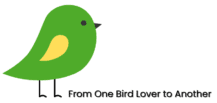
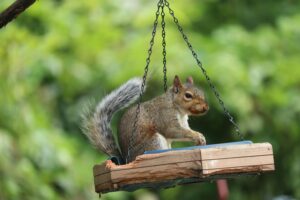
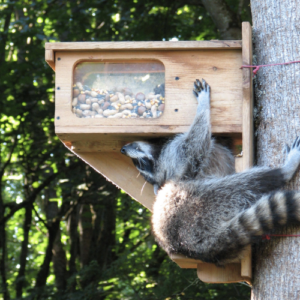
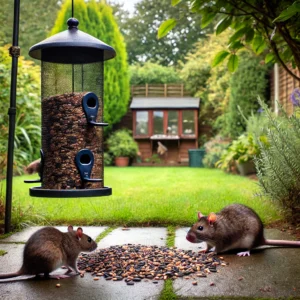
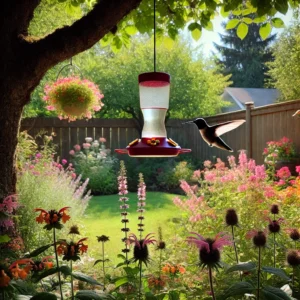
I have found that using foil on top of my laundry post where I keep my feeders at has helped this past week. Cats and dogs don’t like foil on furniture or countertops so thought I would try it on squirrels. 😃🐿️